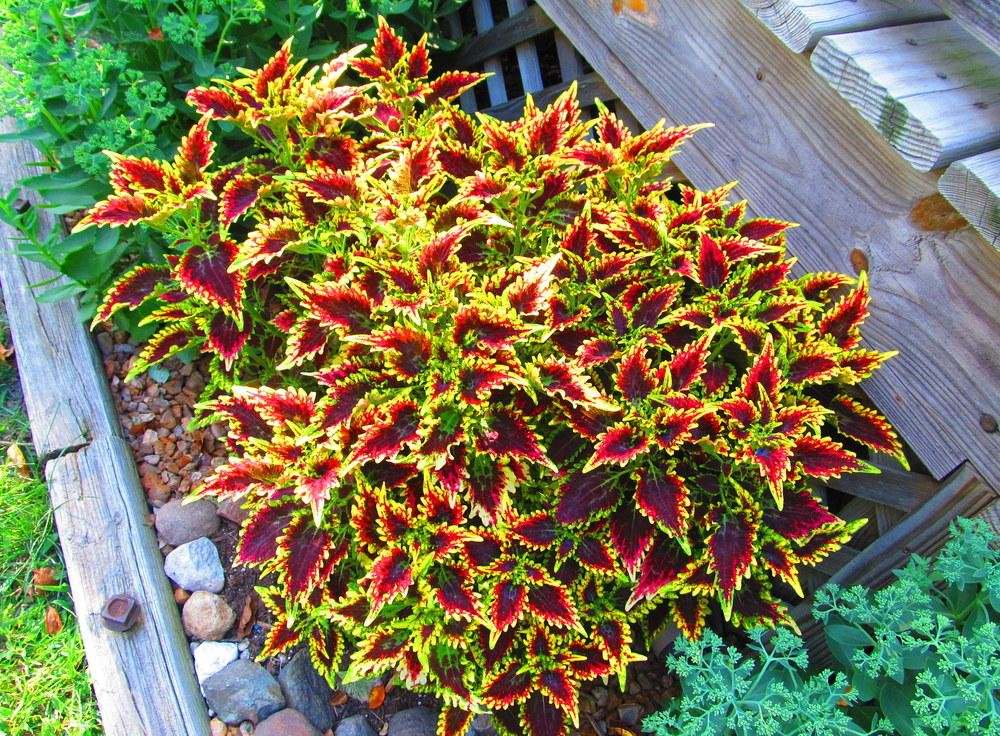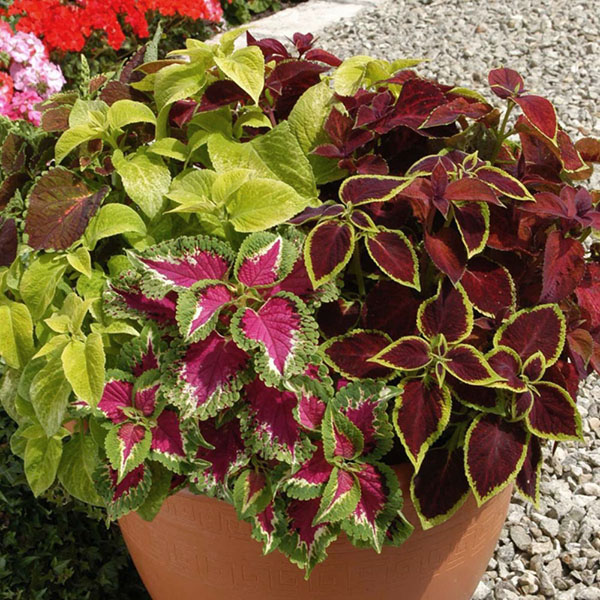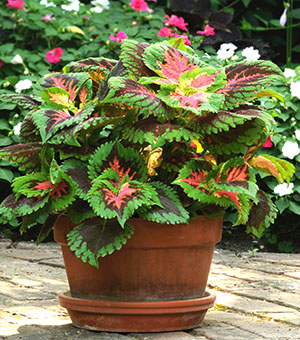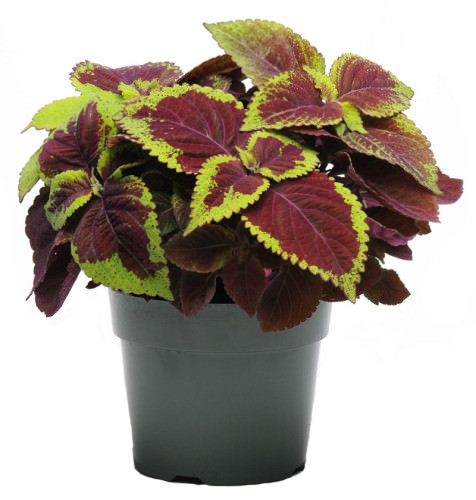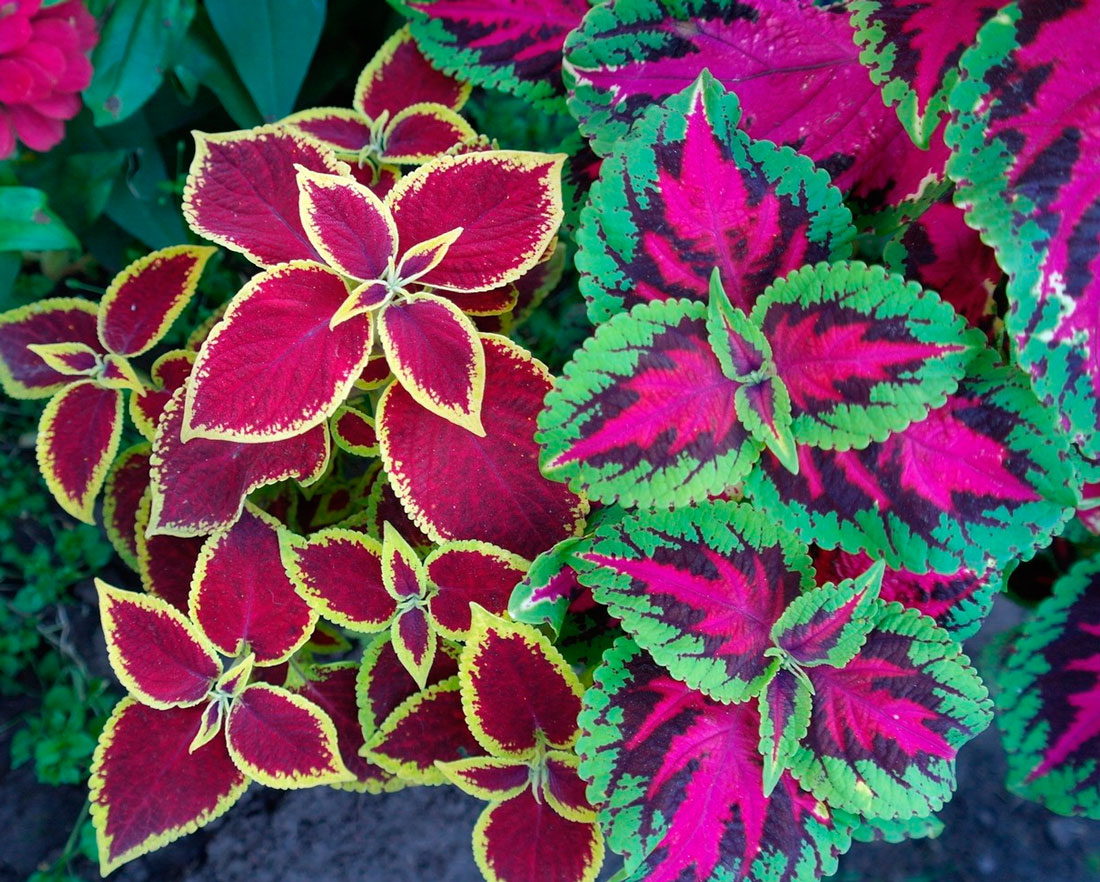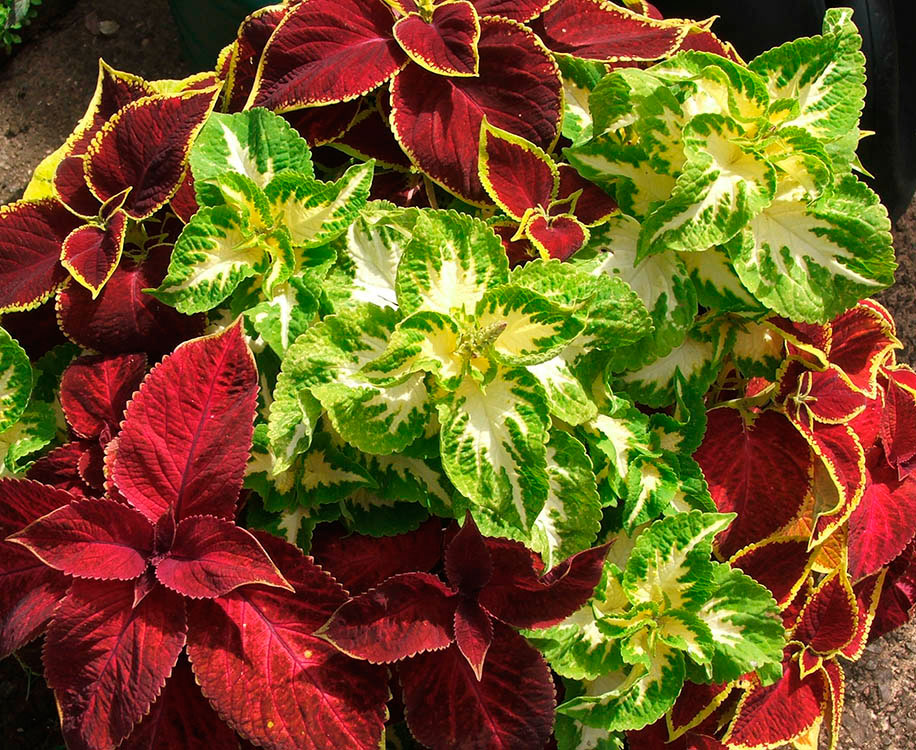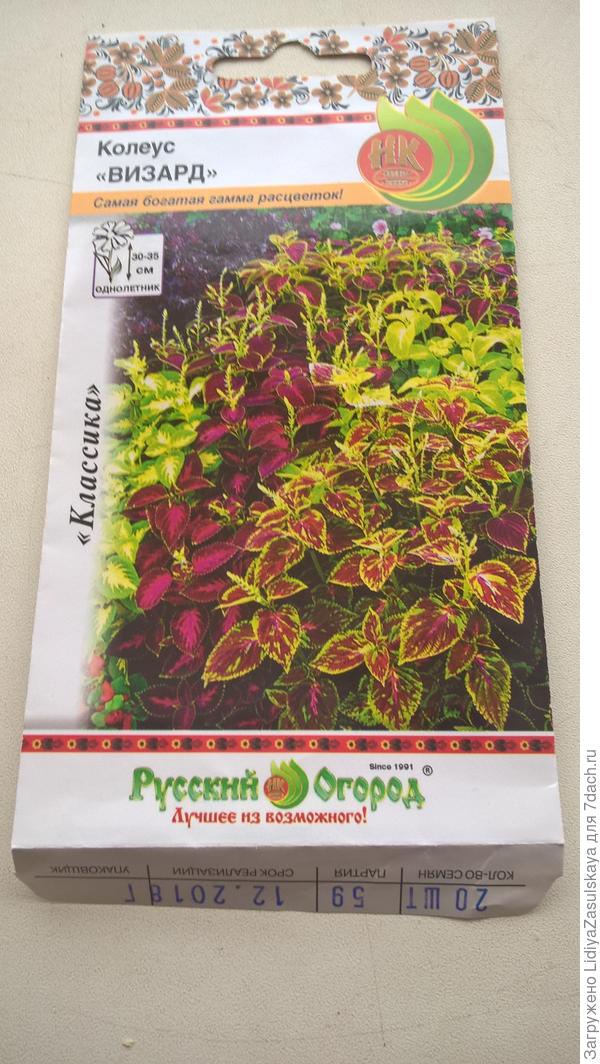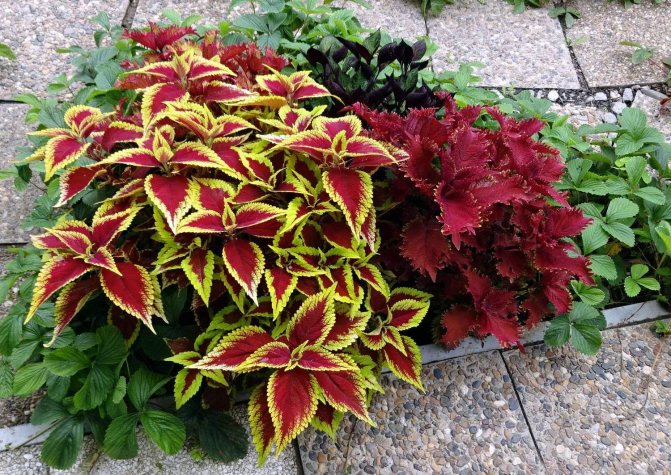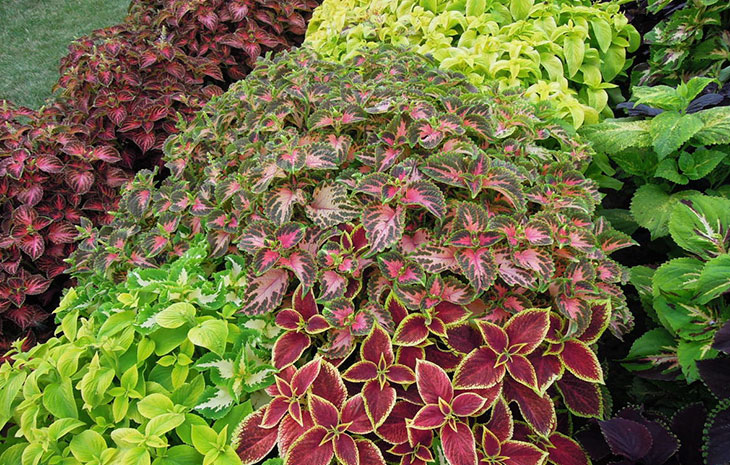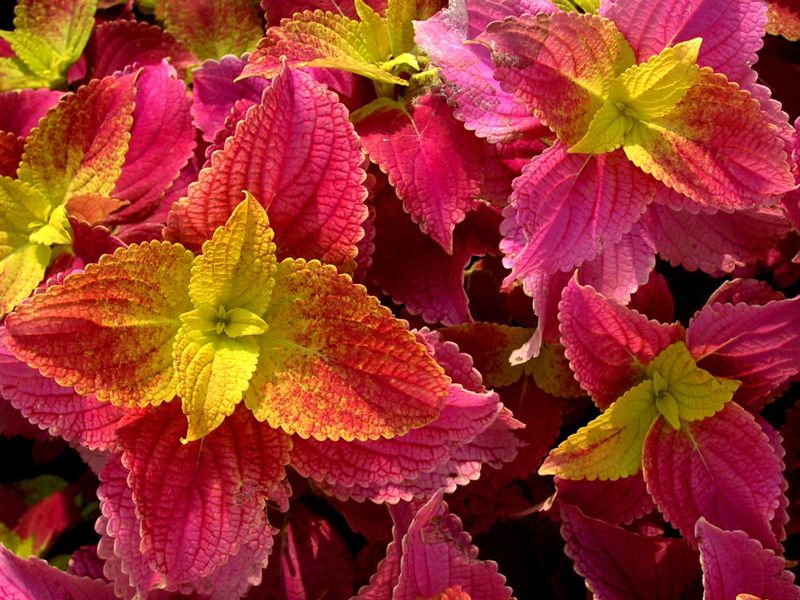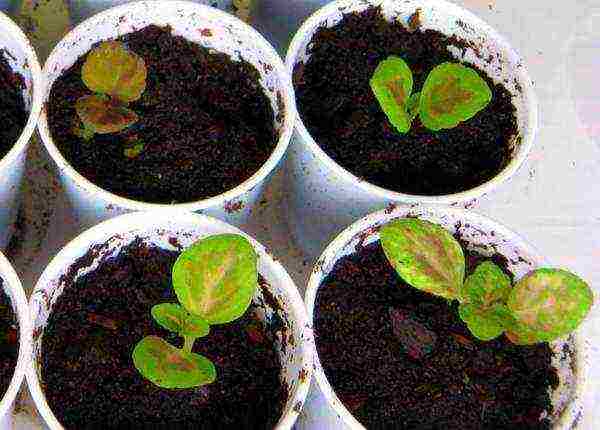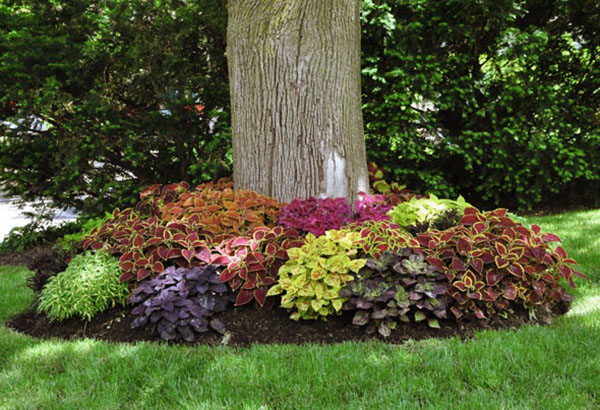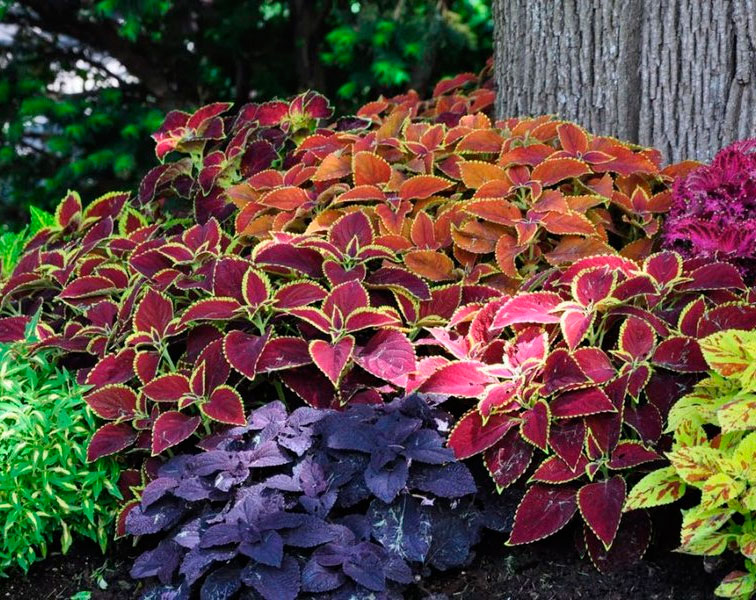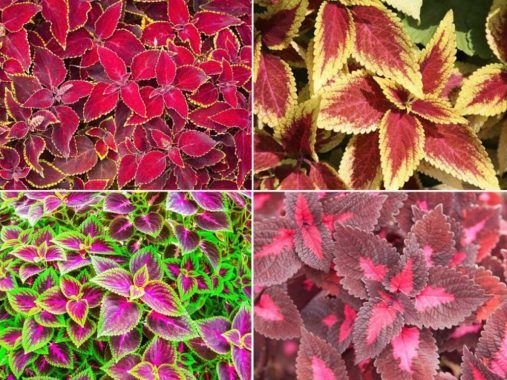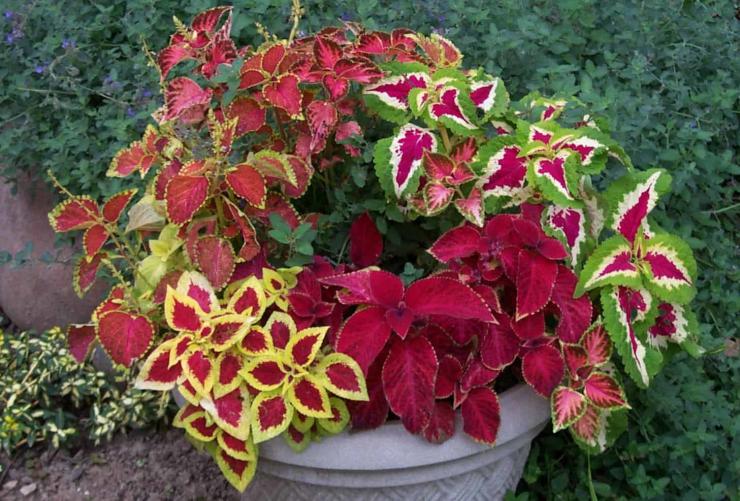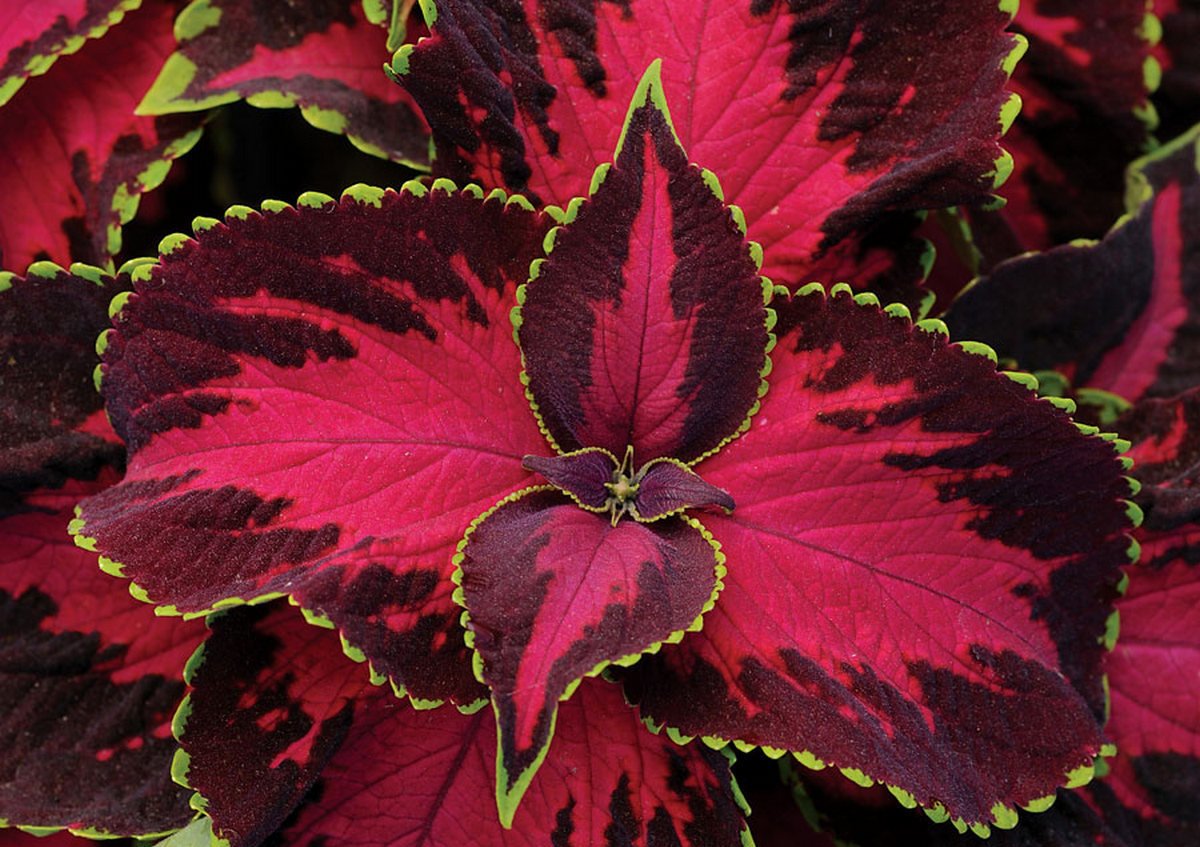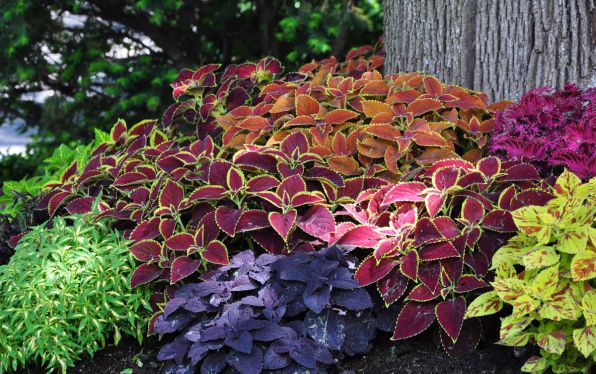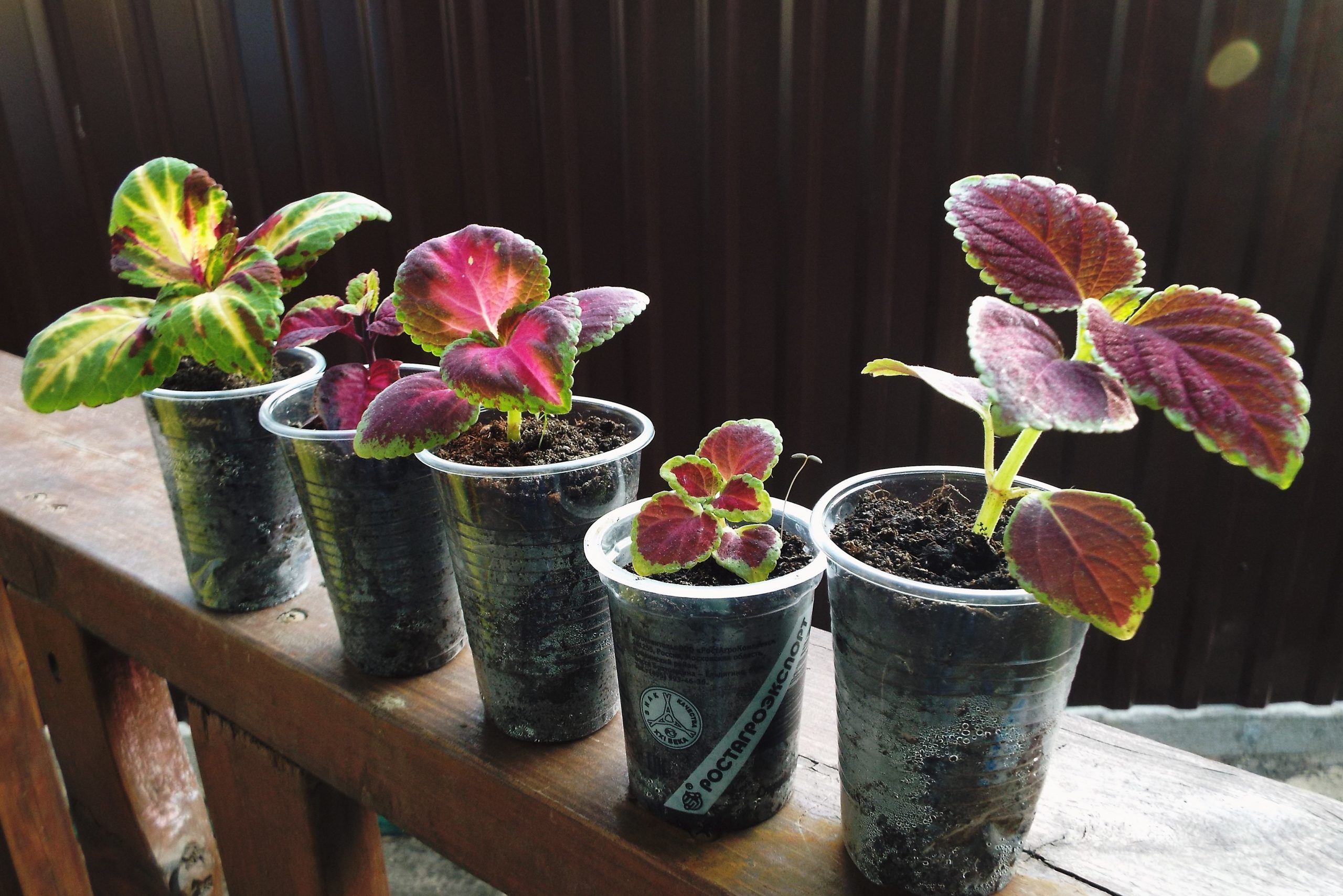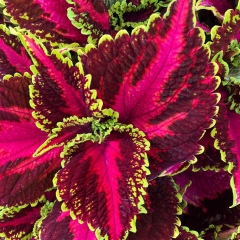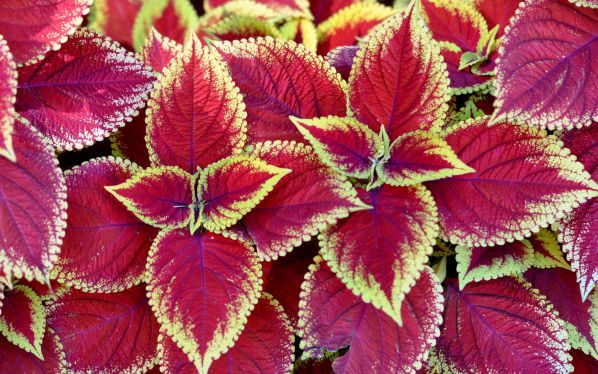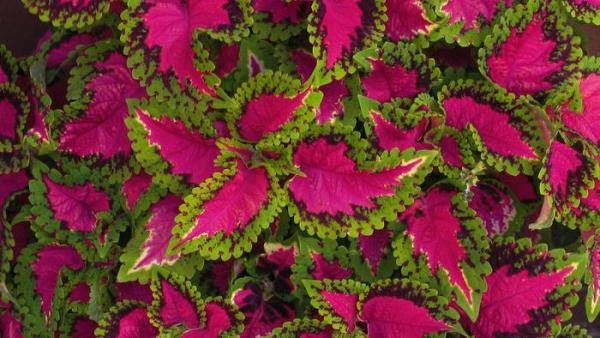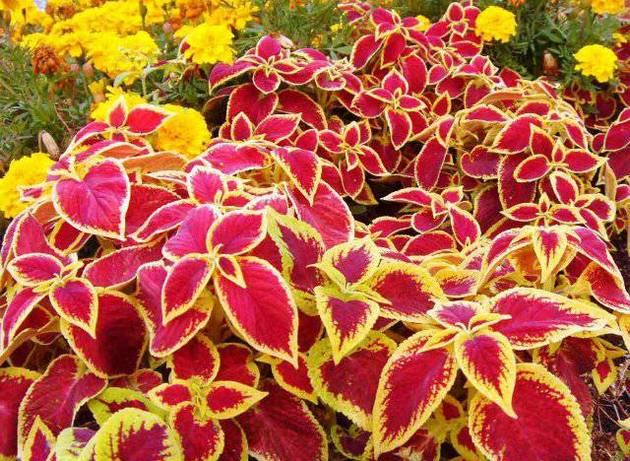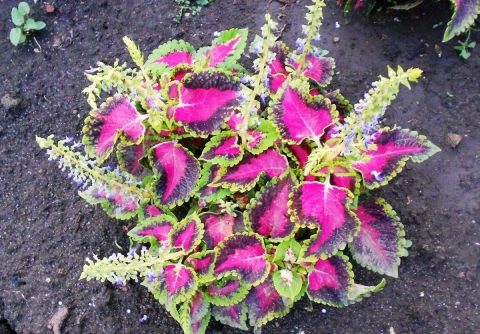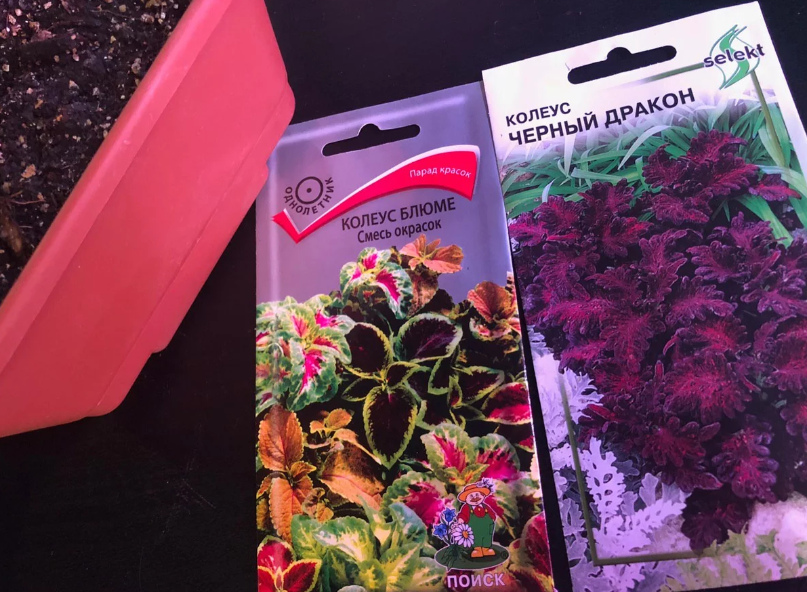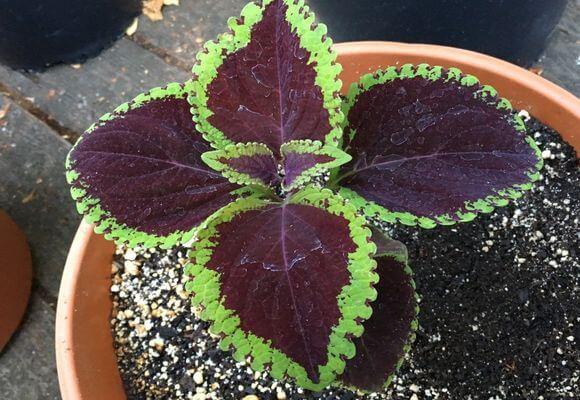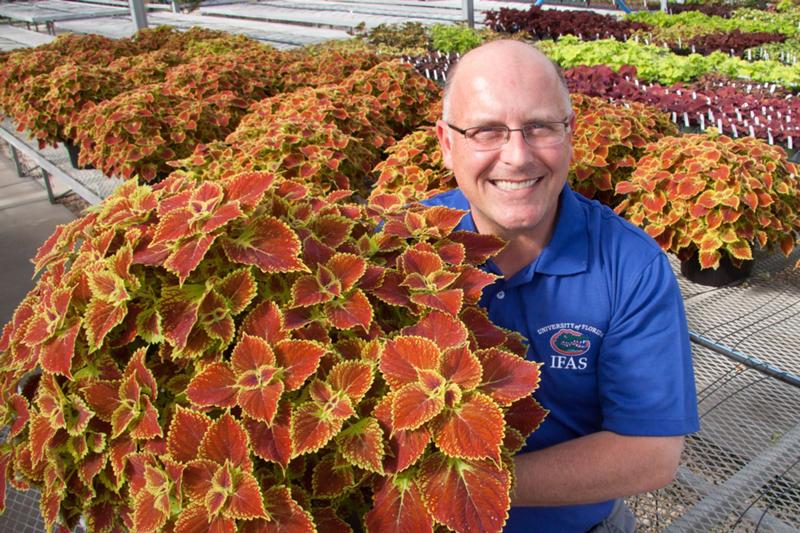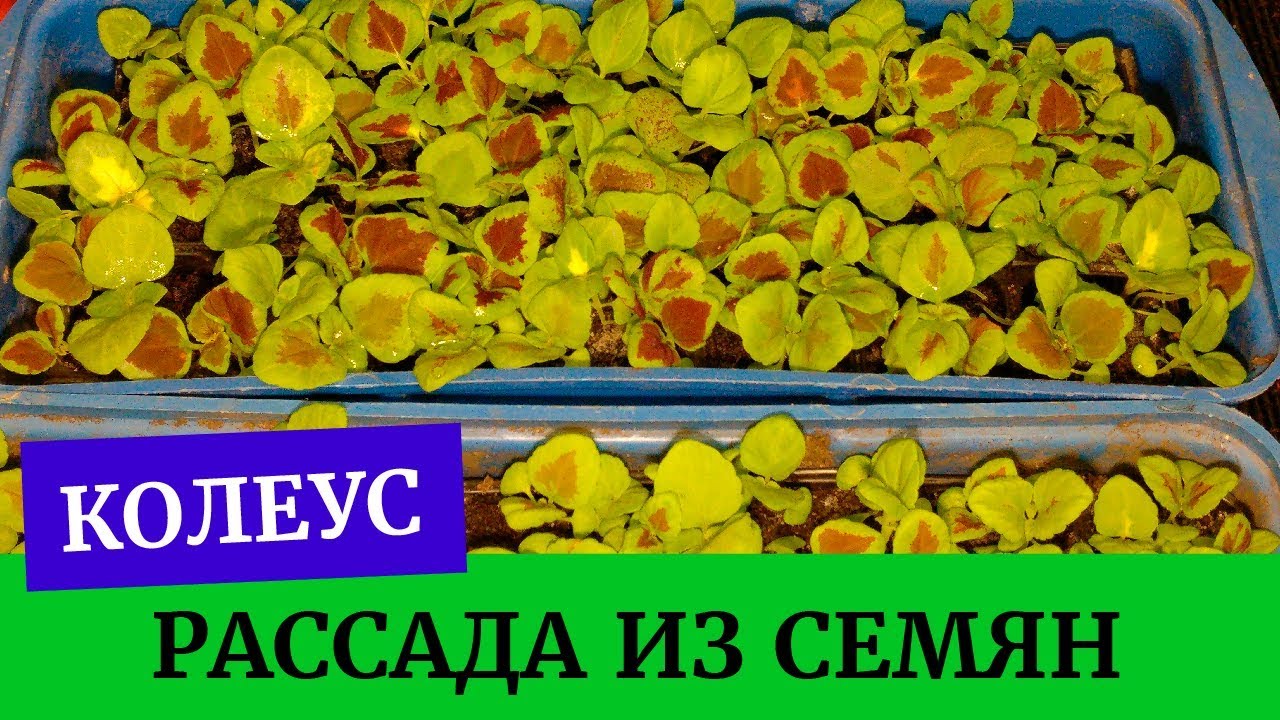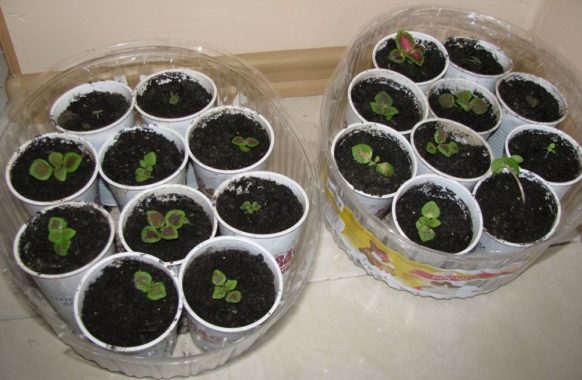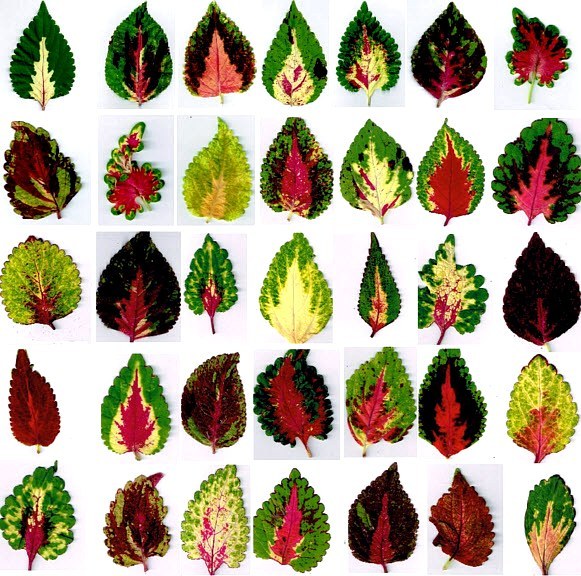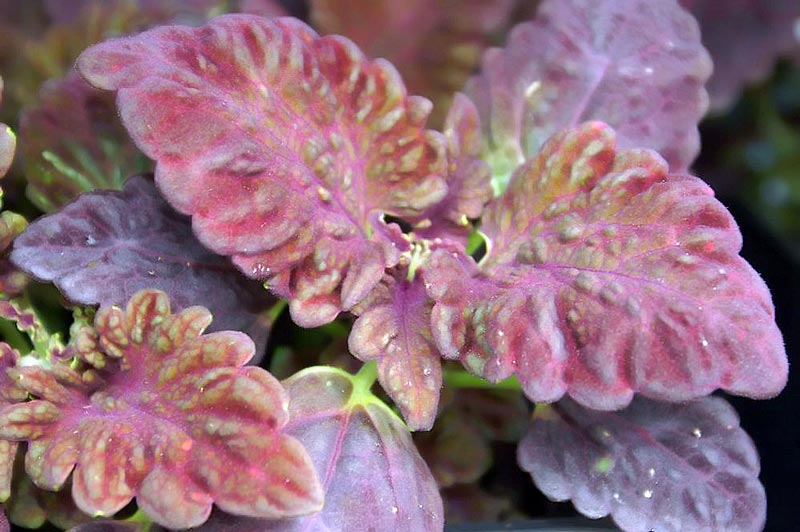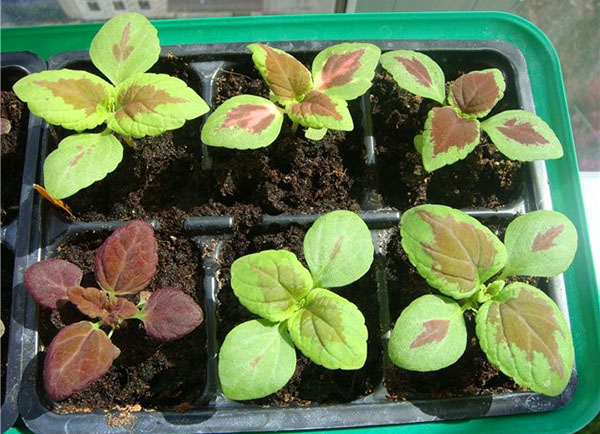Mr. Dachnik recommends: growing coleus from seeds in peat tablets
This is a truly great invention that facilitates the work of summer residents. Seedlings do not require picking, planting also does not take much time.
Germination order:
- Take peat tablets with a diameter of 3-5 cm.
- Place them on a pallet.
- Water is poured into the pan in small portions until the peat is completely swollen.
- Small indentations are made in peat columns with a match and one seed is placed.
- Cover the pallet with a transparent lid.
Further care is carried out in the same way as with the traditional approach: heat, light, regular supply of moisture - every 3-4 days.
Since peat contains few nutrients, the seedlings are fed. Common complex fertilizers of low concentration are used, for example, Agricola, Fertik for ornamental deciduous plants, diluting them in a concentration half to three times less than recommended by the manufacturer. Watered with the composition every 10-12 days.
They tell themselves the timing of transplanting seedlings into pots: thin roots begin to break through the grid of tablets.

Friends! As part of our portal, we launched a book on how to make a lawn with your own hands. If this topic interests you, then READ MORE >>
It is carefully cut with disinfected nail scissors and placed in a glass. Then they add soil, moisten
If by this time warm weather has established on the street.
The only drawback of peat pellets is their high cost. Their use requires sufficient financial costs, especially if a large-scale planting is to be done. But resourceful summer residents overcame this difficulty. The trick is to use the cellulose casing of regular tea bags. They are carefully opened, a metal clip, if any, is removed, and a soil mixture of their peat, sand and fertile soil is added. Then the substrate is moistened and the seeds are laid out.
Most gardeners using this technique prefer green tea leftovers, since it is guaranteed to be free from dyes that can harm the seedlings.
Friends! As part of our portal, we launched a book on how to make a lawn with your own hands. If this topic interests you, then READ MORE >>
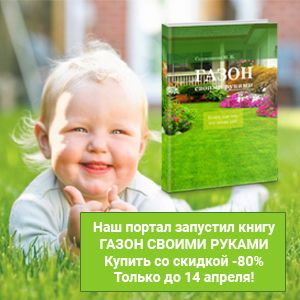
Friends! As part of our portal, we launched a book on how to make a lawn with your own hands. If this topic interests you, then READ MORE >>
Coleus - unpretentious "nettle"
This plant, popular with flower growers and undemanding, belongs to the Lamb family (Labiaceae). It successfully decorates both garden plots, flower beds, and acts as a pot culture. With its original appearance, Coleus won love, and occupies a strong position in the top ten leaders.
Botanical description

- An interesting name comes from "kleos", which means "case". Under natural conditions, this plant can be seen in hot countries: Asia and Africa. To date, more than 150 species are known in the world.
- The height of any species and variety does not exceed 30 - 40 cm, which allows them to be grown in the foreground in a flower bed or indoors.
- The structure of the stems is ribbed. They have 4 faces, near the root system, the shoot tissues coarsen and become lignified. The edges of the stems are almost transparent.
- The special pride of Coleus is in the leaves resembling nettle, hence the second name. Their edge is serrated. The shape is elongated in the form of a heart. The surface of the sheet is velvety, soft and pleasant to the touch. There are varieties with small leaves, but we can also see with a large size. Their length is about 15 cm.
- It is a special pleasure to look at the bright color palette of the sheet plates. They can be burgundy, purple, yellow, light green, red. Often, several contrasting colors are combined to form a spectacular pattern.
- The flowering period is expressed by small flowers, completely inconspicuous, but with a faint pleasant aroma.
There are many varieties: Coleus Rainbow - the owner of small leaves and Blume Zabava, which has become a cultivar for the development of many newer varieties. And an interesting variety of Coleus canine has an interesting feature: the plant has a very unpleasant odor that repels cats. Popular varieties and varietal groups include Fantasy, Black Dragon and Dark Chocolate.
Growing recommendations
Coleus is an unusual flower. The plant is an annual, therefore, it is surprising among flower growers dealing with indoor plants, when a year after planting it begins to wither and then dies. Many people think that he is sick and the conditions are not suitable for him, but this is not so.

Even after all the enhanced dressings and fertilizers, excellent care, the Coleus still does not survive, since it has a life span of only 1 year. As a result, many flower growers, out of ignorance and inexperience, stop growing this wonderful plant.
Those who know about the short lifespan of the Coleus propagate it by grafting. You should tear off the sprout 1 time in 2 - 3 months and put it in water for rooting. Then dive into the pot to a permanent place. As a result, the flower will live 1 - 1.5 years.
Some cuttings are planted directly into the soil. But in this case, it is necessary to take only strong branches from a completely healthy mother bush, and not from one that has already begun to fade. In this case, not all sprouts will be able to germinate.
There is also a way to update - you can periodically cut the crown, which is also allowed to be cut by cuttings, and new shoots grow from the old root. But the root system cannot withstand such a schedule for a long time, therefore, after a few years, the Coleus still dies.
There is no point in planting a plant in a large, solid flowerpot. The best option would be to purchase a mixture of different varieties of this plant.
As a result, you will get a bright ensemble with colorful bright leaves, which will become an accent and will attract attention.
Step-by-step instructions for planting basil seedlings
To grow good seedlings, which will then take root well in the soil and amaze with their magnificent appearance and taste, you must initially properly plant basil seeds on seedlings at home.
Selection and preparation of seeds
A simple but important trick will help you choose a good and high-quality planting material - buy seeds in reliable stores and points of sale with good reviews and from trusted producers.
What seed is best not to buy? The one that has damaged, crumpled, dirty packaging (perhaps the goods were stored incorrectly and the germination rate will decrease because of this), as well as suspiciously cheap goods.
The seeds of this culture germinate well and without pre-sowing treatment. However, if you want to get faster and more friendly shoots, you can process them in a growth stimulator, for example, in "Epine-Extra", "Zircon". You need to soak the seeds according to the instructions on the package.
As you can see in the photo, basil seeds swell when soaked and look very interesting:
Soil preparation
To grow basil seedlings at home to be most successful, you should choose a suitable substrate. The culture prefers fertile, loose, light, air and permeable soil.
You can plant seeds in purchased soil, a universal soil for vegetable seedlings is suitable. Or you can cook it yourself.
If you want to cook the earth at home with your own hands, then you should mix the following ingredients in equal proportions:
- land from the garden;
- peat;
- humus.
Or you can make a potting mix according to the following recipe:
- clean river sand (1 part);
- peat (4 parts);
- humus or compost (2 parts).
Choice of capacity
If you do not plan and do not want to dive the seedlings, then you can plant the basil seeds in large single containers, for example, peat tablets, pots, plastic cups. Their volume is 0.5 liters. You can sow into smaller cups (0.2 l), and then also dive into larger ones.
Or you can sow basil in a common container - a wooden or plastic box, some kind of bowl. For a denser planting, a subsequent pick will be required. But if the container is initially chosen deep and wide and a large distance (7-10 centimeters) is observed between the seeds, then you can do without a pick.
Direct sowing
Consider detailed instructions for planting seeds for seedlings in home with step by step photos that describe all stages:
Step 1: Create a drain.
Place a 1-1.5 centimeter thick drainage layer on the bottom of the planting container. It will eliminate stagnant moisture, which basil does not like very much. You can use perlite, broken brick, expanded clay (as in the photo below):
Step 2: Fill the container with soil.
Leave a small distance between the edges of the container and the ground.
Smooth the surfaces and compact very lightly by hand.
Step 3: Watering the soil.
Moisten the soil with a spray bottle with warm, clean water.
Step 4: Direct sowing of basil seedlings.
When sowing seeds in a common box or bowl, it is practical to sow them in the grooves.
To do this, make grooves (very convenient with a ruler). The depth of the rows is 5 millimeters, the distance between them is 3 centimeters (if you have a large capacity, you can increase the distance to 5-7 cm).
Spread the seeds over the surface, the distance between the seeds is 3 centimeters (if you have a wide box, then plant with an interval of 5-7 cm).
Can be planted with your fingers.
Or you can use tweezers.
Plant basil seedlings in individual containers you need as follows (in the photo there are plastic cassettes):
Make a depression with your finger or a pencil, depth - 3-5 millimeters, no more.
Sow two seeds in one hole. You can also do this with your hands or tweezers.
Step 5: Cover the seeds with soil.
Now you should sprinkle the seeds in the depression with earth. Layer - 0.5 centimeters (but not more).
Step 6: Watering after sowing.
The soil with seeds should be moistened exclusively with a spray bottle; water can be used only with settled, clean, room temperature.
Step 7: Create a mini greenhouse.
A greenhouse is needed to create optimal conditions for seed germination. To do this, cover the container with glass, lid, film.
And then put it in a dark and warm room with a temperature of 23-24 degrees Celsius.
Step 8: Label the seedlings somehow.
For example, attach a sticker.
Growing coleus from seeds
 It is not difficult to obtain unusually attractive Coleus plants from seeds. Self-collected or purchased seeds give a large percentage of seedlings, and young seedlings grow well.
It is not difficult to obtain unusually attractive Coleus plants from seeds. Self-collected or purchased seeds give a large percentage of seedlings, and young seedlings grow well.
And yet, when growing Coleus from seeds at home, several factors must be taken into account.
Plants are light-requiring enough and develop in stably warm air. Therefore, to obtain strong healthy seedlings, sowing is carried out in early spring, when daylight hours begin to increase. In this case, the seedlings are guaranteed not to be weak and elongated due to lack of sun, and their development is much faster than in autumn or winter.
Spring sowing saves not only the grower's time, but also his labor costs. Spring warmth is enough not to suit the seedlings with greenhouse conditions and illumination.
Growing Coleus from seed will require shallow containers with pre-made drainage holes. For sowing, take a light, very loose substrate with a high nutrient content.An example of such a soil is a mixture of humus, sand, peat and crushed sphagnum. Backfilling is carried out almost without compacting the soil so that about 1.5–2 cm remains from the soil to the edge of the container.
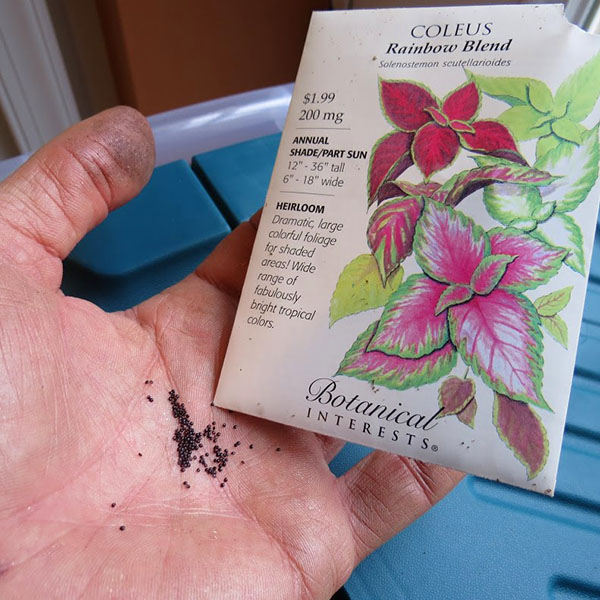 Now you can proceed to sowing:
Now you can proceed to sowing:
- Coleus seeds are very small, so they are not embedded in the ground, but only evenly distributed over its surface.
- On top of the planting moisten with a spray bottle. This has to be done very carefully, since even a stream of water can deepen the seeds or lead to their crowding.
- The container is placed in a window greenhouse or placed under a film.
When the seeds intended for growing Coleus have fallen into a nutritious moist substrate, they need warmth and light. Therefore, the container should be immediately placed on a light windowsill or artificial lighting should be arranged for crops. The optimum temperature for a wheel is 22 - 24 ° C.
It usually takes about two weeks before germination. Until the sprouts appear, the crops are aired every day. If necessary, the substrate is moistened.
Coleus as a houseplant
At home, it automatically switches from the category of annual garden flowers to the category of perennial indoor plants. Although this is very arbitrary. Coleus grows very quickly, stretches out, exposing the lower part of the trunk, which is at the expense of decorativeness. Therefore, its periodic rejuvenation is required. If you do not plan to grow it from seeds on your own, but buy a ready-made Coleus, then it is better to do it in the spring.
Lighting
Bright diffused light is what Coleus needs. Moreover, such lighting can be obtained even at the northern window. He does not need direct sunlight. Moreover, they are even harmful. Therefore, it is better to place the Coleus not directly on the windowsill, but near the window or protecting it from sunlight.
Temperature
At temperatures below +15 - 16 degrees, the growth of the coleus slows down significantly. But it can withstand lower temperatures (up to +10 degrees) without harming itself. The most favorable growing temperature for Coleus is +20 - 25 degrees. That is, the most common room temperature. If kept at a higher temperature, more frequent watering and humidification will be needed.
Watering, air humidity and feeding
When watering Coleus, one must be guided by the rule - the earth should not dry out and be constantly wet, especially if the room is hot. But the lower the air temperature, the less often watering.
If the temperature in the room is moderate, then periodic spraying of the Coleus can be dispensed with. At elevated temperatures, and especially during the heating season, it must be sprayed daily. For watering and spraying, use only clean, settled and preferably soft water.
For dressing, a complete mineral fertilizer is quite suitable. It also reacts very well to fertilizers with a high potassium content.
Reproduction and rejuvenation of coleus
Coleus can also be grown from seeds. As I mentioned above, this is actually growing seedlings and is not particularly difficult. It is necessary to sow seeds in March. When the seeds germinate, provide the seedlings with good lighting. Otherwise, they will grow elongated, weak. When the leaves of the seedlings acquire a characteristic color, they can be planted separately.
But most often, flower growers are faced with the need to rejuvenate an old plant. To do this, use the method of reproduction of the Coleus cuttings. It is much easier to propagate by seeds. In this way, many indoor plants (geranium, epiphyllum, monstera, Benjamin's ficus and others, etc.) easily multiply. It is enough to cut off the apical stalk from the overgrown coleus and put it in a glass of water. Very soon he will give roots. After that, it can be planted in a pot of soil. If you do this procedure annually, in late summer - early autumn, then you will always have a young beautiful Coleus.
How to germinate cactus seeds
Conditions for germination of cactus seeds
For the successful germination of seeds of many cactus species, a daytime temperature of about + 26 ° -30 ° C is needed, at night it is 7-10 ° C lower. Moderate soil moisture (not damp, not dry, but slightly damp) and high air humidity.
But as soon as the seeds germinate, there is an urgent need for the third and main growth factor - lighting. And the lighting should be very good!
Growth stimulants, which have proven themselves very well when rooting cuttings and germinating seeds of other indoor plants, are rarely used for cacti, since their effect on these plants has not been fully understood. If you want to try such a remedy, then it is better to apply it to one cactus, and not to the entire collection.
What and where to sow seeds
For germinating and growing seeds, it is better to use a special greenhouse, which can be purchased in the store or made on your own. But if there is no opportunity to make or buy a greenhouse, then the seeds are simply sown in a bowl.
At the bottom of the bowl (wide tray, low box), drainage is poured, about 7-10 mm high. Then a layer of loose leafy earth about 2 cm in height and a layer of well-washed river sand, about 1.5-2 cm in height. Previously, the drainage is poured over with boiling water, and the soil and sand are fried in the oven or warmed up in the microwave for disinfection. Sand for sowing is only suitable for river sand, not from a sandbox and must be sifted from dust. It is desirable that the particle size is 1-3 mm. Unwashed and / or very fine sand, after getting wet, cakes, sticks together and forms a dense crust. This does not allow the seedling rootlets to breathe, they quickly die.
Before sowing, cactus seeds must be disinfected. To do this, the easiest way is to use 3% hydrogen peroxide; it is enough to soak the seeds for 5-10 minutes.
Seeds are sown at the recommended depth for a particular species. Seeds up to 3 mm in size, especially small, dust-like seeds are not sprinkled with sand, they are sown directly on the surface. Larger seeds can be sown into grooves no more than 3 mm deep. You have to sow cacti either by hand, choosing each seed separately, or sprinkle very small seeds on the surface of the sand with a pinch. It is advisable to sow seeds with a pinch, of which there are a lot and during germination it is not a pity to thin out the seedlings. If seeds are rare or limited, plant each one individually.
Here it is necessary to warn: the seeds of most cacti are small, if they fall, then they are irretrievably lost. Therefore, open the seeds that came in the parcel carefully, over a table covered with white paper and, trying not to scatter.
By the way, the most experienced cactusists of our forum have already shared their secrets of growing cacti from seeds.
Caring for Coleus seedlings at home
Growing Coleus seedlings at home is in general a simple process, but it is important to know some features in order to avoid annoying mistakes. Proper care after sowing includes a set of measures, each of which plays an important role in the normal development of seedlings and their health.
So, you need to take care after planting seeds and before germination as follows:
- Seeds germinate well only in greenhouse conditions (high humidity and heat). Therefore, the container must be covered with a transparent lid, cling film or clean glass. To avoid mold, it is necessary to open the greenhouse daily for 10-15 minutes, and also wipe off the condensation drops from the surface of the covering material.
- Also, the seeds of this culture need sunlight for germination, so their capacity should be placed in a sunny place immediately after planting.
- It is optimal to maintain a temperature of + 20-22 ° C before germination.
- Before germination of seedlings, it is necessary to water only from a spray bottle so that the pressure of water does not wash out the seeds.However, watering at this stage may not be needed, the greenhouse retains moisture well.
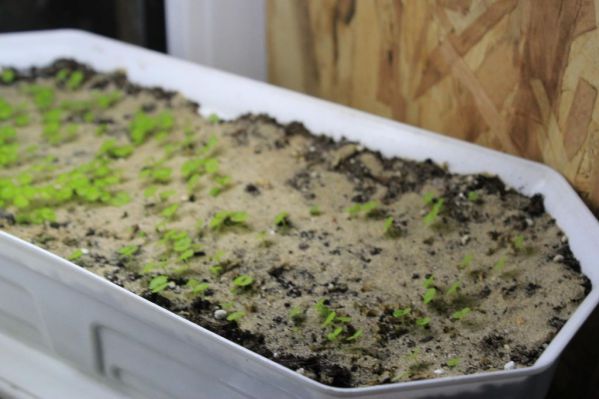
Caring for Coleus seedlings consists of the following activities:
At this stage, it is optimal to maintain the temperature in the region of 16-18 degrees Celsius.
Seedlings of this culture require good lighting, but the sun's rays should not be too bright and scorching. Optimally arrange plants on the east or west windowsill. If the weather is gloomy and the sun is not enough, it is recommended to supplement the plants with phytolamps.
Watering Coleus seedlings should be very careful. Excess moisture will provoke rotting of the roots, the development of fungal diseases (especially the dangerous black leg), molds
Watering is carried out as the top layer of the earth dries up with a small amount of water
In this case, it is important to use a liquid at room temperature, and be sure to pre-settle.
In an unfavorable combination of circumstances, the seedlings can get sick with a black leg, the disease is very dangerous, because the affected plants cannot be cured, you can only save the rest of the healthy specimens. To prevent seedlings from getting sick with a black leg, it is necessary to pay attention to preventive measures: water moderately, after the emergence of seedlings, you can powder the soil with plants with wood ash, after a while you can water the soil with Fitosporin solution.
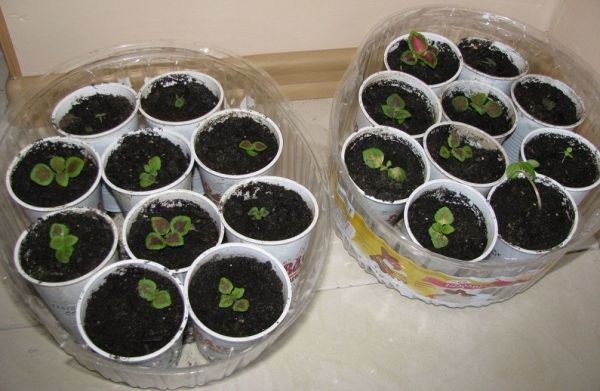
Reproduction of Coleus
Some varieties, despite the fact that in our climate they grow in open ground, like annuals, are able to reproduce in gardens by self-seeding.
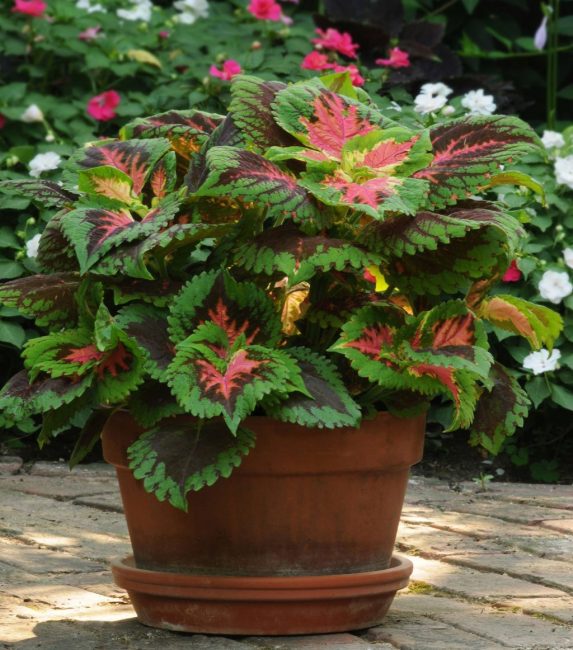
The plant has no problems with reproduction
At home, both vegetative (mainly by cuttings) and generative (seed) methods of reproduction of Coleus are used. Let's consider them in more detail:
Propagation by cuttings
The optimal time for plant propagation by cuttings is April. With spring preventive or decorative pruning of Coleus, there are always many fragments of leaves or stems that are perfect for grafting. Usually, either the top of a too long stem with a cone of growth, or the central part of the stem, containing 2-4 sufficiently large leaves, is used as a cutting. The optimal cutting length is considered to be 8-12 cm.
It is necessary to remove the leaves and lateral processes from the cutting, so that the length of the stem from below is at least 6 cm.After that, it must be stuck into the ground (the same as that of the mother plant) or a mixture of peat and sand in a ratio of 1 to 1.

Rooting of coleus cuttings
After that, the cutting must be watered abundantly and greenhouse conditions created for it. To do this, it is covered with a plastic bag or bottle and taken to a dark room with a temperature of about + 18-20 ° C.
After about 1-1.5 weeks, the cuttings have roots and are ready to be transplanted into their first pot. Planting rules are similar to those for transplanting a plant.
Seed reproduction
The procedure for seed reproduction of Coleus, both when grown at home and when planted in open ground, is absolutely the same. The only thing to remember is that it is best to plant the seeds during the active phase of the plant's life. You can, of course, get seedlings in the winter, but it is better to wait for spring in order to bring the cultivation of the plant as close as possible to its natural appearance.

Seeds of Coleus Blume
The seeds of the plant can be purchased at any flower shop, or you can grow them yourself, allowing the plant to bloom. Seed germination lasts for several years.

First seed shoots
Seeds are planted in a neutral or slightly acidic substrate of any composition. You can use both a substrate for adult plants and any peat-containing mixture for seedlings. The depth and density of planting seeds do not play a special role.

Blooming Coleus in the open field
As the seeds germinate and they have the first two leaves, they dive, after which they begin to water abundantly and fertilize with nitrogenous fertilizers for seedlings. When the time comes for the second pick (with 5-6 leaves), the seedlings are transplanted into a pot for an adult plant. It continues to be fertilized with nitrogenous fertilizers until flowering. As soon as the first flowers appear, they are cut off, nitrogen fertilization is stopped, and the plant is started to look after as usual.

Coleus variety Blume with elongated leaves
Usually the plant itself, obtained by seed propagation, is not grown for more than a year. Most often, at the beginning of the next season, it is completely "disassembled" into cuttings. And it is from these cuttings that decorative crops are obtained.

Ageratum: description, planting in open ground and caring for it at home (30+ Photos & Videos) + Reviews


